Question A:
The concept of “maximum sustainable employment” is well defined enough to be used beneficially in economic policymaking.
Responses
© 2025. Kent A. Clark Center for Global Markets.
12%
7%
0%
17%
24%
38%
2%
Responses weighted by each expert's confidence
© 2025. Kent A. Clark Center for Global Markets.
0%
22%
23%
50%
5%
Question B:
Right now the US economy is operating below maximum sustainable employment.
Responses
© 2025. Kent A. Clark Center for Global Markets.
12%
17%
0%
12%
38%
17%
5%
Responses weighted by each expert's confidence
© 2025. Kent A. Clark Center for Global Markets.
0%
20%
48%
21%
10%
Question A Participant Responses
Participant |
University |
Vote |
Confidence |
Bio/Vote History |
|---|---|---|---|---|
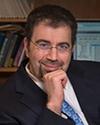 Daron Acemoglu |
MIT | Bio/Vote History | ||
|
I don't think it's well defined. Lots of policies and institutions affect employment. Which one is "sustainable"? Does it mean efficient?
|
||||
 Alberto Alesina |
Harvard | Bio/Vote History | ||
|
|
||||
 Joseph Altonji |
Yale | Bio/Vote History | ||
|
|
||||
 Alan Auerbach |
Berkeley | Bio/Vote History | ||
|
|
||||
 David Autor |
MIT | Bio/Vote History | ||
|
Emphasis on "well defined enough" -- meaning that it's not precisely defined, but still approximately useful.
|
||||
 Katherine Baicker |
University of Chicago | Bio/Vote History | ||
|
|
||||
 Abhijit Banerjee |
MIT | Bio/Vote History | ||
|
|
||||
 Marianne Bertrand |
Chicago | Bio/Vote History | ||
|
|
||||
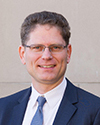 Markus Brunnermeier |
Princeton | Bio/Vote History | ||
|
|
||||
 Raj Chetty |
Harvard | Did Not Answer | Bio/Vote History | |
|
|
||||
 Judith Chevalier |
Yale | Bio/Vote History | ||
|
|
||||
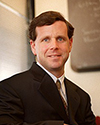 David Cutler |
Harvard | Bio/Vote History | ||
|
|
||||
 Angus Deaton |
Princeton | Bio/Vote History | ||
|
|
||||
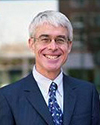 Darrell Duffie |
Stanford | Bio/Vote History | ||
|
|
||||
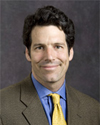 Aaron Edlin |
Berkeley | Did Not Answer | Bio/Vote History | |
|
|
||||
 Barry Eichengreen |
Berkeley | Bio/Vote History | ||
|
|
||||
 Liran Einav |
Stanford | Bio/Vote History | ||
|
|
||||
 Ray Fair |
Yale | Bio/Vote History | ||
|
|
||||
 Amy Finkelstein |
MIT | Bio/Vote History | ||
|
|
||||
 Pinelopi Goldberg |
Yale | Did Not Answer | Bio/Vote History | |
|
|
||||
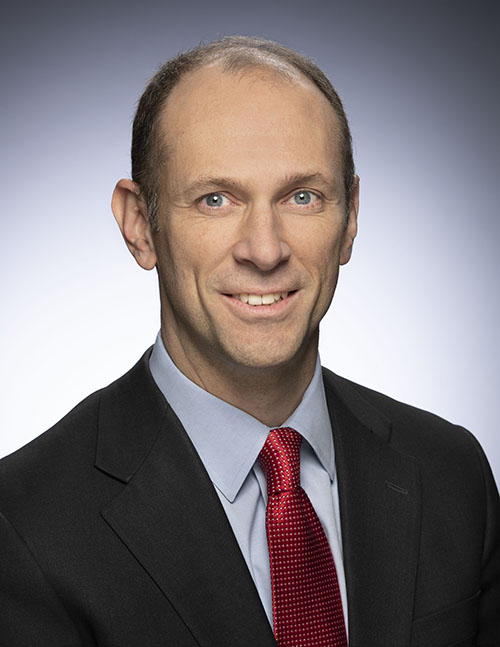 Austan Goolsbee |
Chicago | Bio/Vote History | ||
|
|
||||
 Michael Greenstone |
University of Chicago | Bio/Vote History | ||
|
|
||||
|
Robert Hall |
Stanford | Bio/Vote History | ||
|
Certainly not if it is interpreted as a fixed u*. We now know that unemployment dynamics following a major shock are complicated.
|
||||
 Oliver Hart |
Harvard | Bio/Vote History | ||
|
|
||||
 Bengt Holmström |
MIT | Bio/Vote History | ||
|
|
||||
 Caroline Hoxby |
Stanford | Bio/Vote History | ||
|
As a labor and microeconomist, I find "maximum sustainable employment" to be only loosely grounded in economic reasoning.
|
||||
 Hilary Hoynes |
Berkeley | Bio/Vote History | ||
|
|
||||
 Kenneth Judd |
Stanford | Bio/Vote History | ||
|
The traditional measurement is unemployment rate. The ratio of employment to population depends on demographics as much as economic health.
|
||||
 Steven Kaplan |
Chicago Booth | Bio/Vote History | ||
|
|
||||
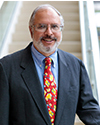 Anil Kashyap |
Chicago Booth | Bio/Vote History | ||
|
in times like january 2009 it is obviously not true so having that in the Fed mandate helps, complicates times like now.
|
||||
 Pete Klenow |
Stanford | Bio/Vote History | ||
 Jonathan Levin |
Stanford | Did Not Answer | Bio/Vote History | |
|
|
||||
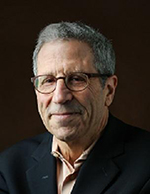 Eric Maskin |
Harvard | Bio/Vote History | ||
|
|
||||
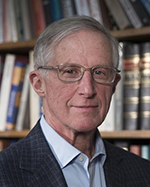 William Nordhaus |
Yale | Bio/Vote History | ||
|
How else can the Fed understand the dual mandate?
|
||||
 Emmanuel Saez |
Berkeley | Bio/Vote History | ||
|
|
||||
 Larry Samuelson |
Yale | Bio/Vote History | ||
|
Coming to a precise numbers is always difficult, but the concept is quite useful in thinking about our economy.
|
||||
 José Scheinkman |
Columbia University | Bio/Vote History | ||
|
enough is the operative word
|
||||
 Richard Schmalensee |
MIT | Bio/Vote History | ||
|
Not sure it is very useful at all times, though.
|
||||
 Carl Shapiro |
Berkeley | Did Not Answer | Bio/Vote History | |
|
|
||||
 Robert Shimer |
University of Chicago | Bio/Vote History | ||
|
|
||||
 Richard Thaler |
Chicago Booth | Bio/Vote History | ||
|
The concept is clear enough but who knows how to measure it?
|
||||
 Christopher Udry |
Northwestern | Bio/Vote History | ||
|
|
||||
Question B Participant Responses
Participant |
University |
Vote |
Confidence |
Bio/Vote History |
|---|---|---|---|---|
 Daron Acemoglu |
MIT | Bio/Vote History | ||
|
The concept doesn't make sense. But of course we have policy options to increase efficiency in the labor market and employment. Lots of them
|
||||
 Alberto Alesina |
Harvard | Bio/Vote History | ||
|
|
||||
 Joseph Altonji |
Yale | Bio/Vote History | ||
|
|
||||
 Alan Auerbach |
Berkeley | Bio/Vote History | ||
|
|
||||
 David Autor |
MIT | Bio/Vote History | ||
|
Unemployment is down, which is great, but labor force participation still has a lot of headroom to rise.
|
||||
 Katherine Baicker |
University of Chicago | Bio/Vote History | ||
|
|
||||
 Abhijit Banerjee |
MIT | Bio/Vote History | ||
|
|
||||
 Marianne Bertrand |
Chicago | Bio/Vote History | ||
|
|
||||
 Markus Brunnermeier |
Princeton | Bio/Vote History | ||
|
|
||||
 Raj Chetty |
Harvard | Did Not Answer | Bio/Vote History | |
|
|
||||
 Judith Chevalier |
Yale | Bio/Vote History | ||
|
|
||||
 David Cutler |
Harvard | Bio/Vote History | ||
|
|
||||
 Angus Deaton |
Princeton | Bio/Vote History | ||
|
|
||||
 Darrell Duffie |
Stanford | Bio/Vote History | ||
|
|
||||
 Aaron Edlin |
Berkeley | Did Not Answer | Bio/Vote History | |
|
|
||||
 Barry Eichengreen |
Berkeley | Bio/Vote History | ||
|
Debate continues about whether currently discouraged workers are permanently discouraged, but I think views are converging.
|
||||
 Liran Einav |
Stanford | Bio/Vote History | ||
|
|
||||
 Ray Fair |
Yale | Bio/Vote History | ||
|
Given that I disagree regarding the first question, the second question is not meaningful.
|
||||
 Amy Finkelstein |
MIT | Bio/Vote History | ||
|
|
||||
 Pinelopi Goldberg |
Yale | Did Not Answer | Bio/Vote History | |
|
|
||||
 Austan Goolsbee |
Chicago | Bio/Vote History | ||
|
|
||||
 Michael Greenstone |
University of Chicago | Bio/Vote History | ||
|
|
||||
|
Robert Hall |
Stanford | Bio/Vote History | ||
|
Until the next shock occurs, unemployment will continue to drift downward. The u rate in 1999 in MSP was 0.9 percent without dysfunction.
|
||||
 Oliver Hart |
Harvard | Bio/Vote History | ||
|
|
||||
 Bengt Holmström |
MIT | Bio/Vote History | ||
|
|
||||
 Caroline Hoxby |
Stanford | Bio/Vote History | ||
|
Having said that "maximum sustainable employment" is only loosely grounded in economics, I obviously cannot say whether we are at it or not.
|
||||
 Hilary Hoynes |
Berkeley | Bio/Vote History | ||
|
|
||||
 Kenneth Judd |
Stanford | Bio/Vote History | ||
|
The last time we had sustained unemployment rate below 4% was 66-69, the peak of the Viet Nam war.
|
||||
 Steven Kaplan |
Chicago Booth | Bio/Vote History | ||
|
Labor force participation, particularly for men, could be higher.
|
||||
 Anil Kashyap |
Chicago Booth | Bio/Vote History | ||
|
maybe, but if i had to bet we are about there.
|
||||
 Pete Klenow |
Stanford | Bio/Vote History | ||
 Jonathan Levin |
Stanford | Did Not Answer | Bio/Vote History | |
|
|
||||
 Eric Maskin |
Harvard | Bio/Vote History | ||
|
|
||||
 William Nordhaus |
Yale | Bio/Vote History | ||
|
Probably above, perhaps at, but clearly not below by Fed’s own estimates.
|
||||
 Emmanuel Saez |
Berkeley | Bio/Vote History | ||
|
|
||||
 Larry Samuelson |
Yale | Bio/Vote History | ||
|
We might aspire to a higher labor force participation rate, but there is little evidence we can push the unemployment rates markedly lower.
|
||||
 José Scheinkman |
Columbia University | Bio/Vote History | ||
|
|
||||
 Richard Schmalensee |
MIT | Bio/Vote History | ||
|
Different indicators seem to be sending mixed signals.
|
||||
 Carl Shapiro |
Berkeley | Did Not Answer | Bio/Vote History | |
|
|
||||
 Robert Shimer |
University of Chicago | Bio/Vote History | ||
|
|
||||
 Richard Thaler |
Chicago Booth | Bio/Vote History | ||
|
labor force participation rate down and little wage pressure suggests room to grow the labor force.
|
||||
 Christopher Udry |
Northwestern | Bio/Vote History | ||
|
|
||||

